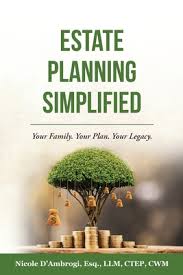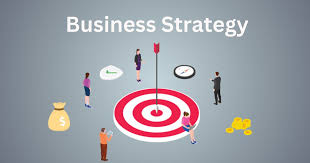Building Customer Loyalty: Effective Strategies to Keep Your Clients Coming Back
The business world is highly competitive and extremely crowded, so, customer loyalty is not merely an advantage; it’s a prerequisite for the survival and success of a business. As marketing expert Philip Kotler once said, “The aim of marketing is to know and understand the customer so well the product or service fits him and sells itself.” This principle reinforces why businesses must invest in strategies that foster strong relationships with their clients.
Walk with me, as we dissect effective strategies for building customer loyalty, the benefits of nurturing lasting client relationships, and some valuable tips for implementing these strategies in your business.
Why Focus on Customer Loyalty?
It is important to understand why customer loyalty counts. According to research by Bain & Company, a mere 5% increase in customer retention can boost profits by 25% to 95%. Thus, the importance of constructing a loyal customer base cannot be overstated.
Benefits of Customer Loyalty
- Increased Revenue: Loyal customers tend to spend more per transaction, often buying additional products or services.
- Cost-Efficiency: Retaining existing clients is significantly less expensive than acquiring new ones. Research from Harvard Business Review suggests it costs five times more to attract a new customer than to keep an existing one.
- Viral Marketing: Satisfied customers become advocates for your brand, helping spread positive word-of-mouth without cost.
- Feedback and Improvement: Loyal clients provide invaluable feedback for businesses looking to improve products or services.
Strategies for Building Customer Loyalty
1. Exceptional Customer Service
Providing top-notch customer service is the bedrock of customer loyalty. A survey from American Express showed that 70% of Americans are willing to spend more with a company that provides excellent customer service.
Tips For Delivering Exceptional Customer Service
- Train Your Staff: Invest in regular training programs to empower staff with the skills to provide excellent service.
- Personalize Interactions: Use customer names and personal details to enrich the interaction experience.
- Be Responsive: Customers value quick responses to questions or issues. A 24/7 chat support feature can significantly enhance customer satisfaction.
2. Customer Engagement
Regular engagement is essential for keeping the relationship between clients and businesses active. Engaged customers tend to be more loyal.
Ways To Engage Your Customers
- Social Media Interactions: Encourage clients to engage with your brand on platforms like Instagram and Twitter. Respond to comments and questions promptly.
- Email Marketing : Send personalized newsletters that offer value, including promotions, product launches, or educational content related to your services.
- Loyalty Program s :Create a rewards system that gives customers points for purchases, reviews, and referrals.
3. Quality Products and Services
The foundation of any loyal customer relationship hinges on the quality of products or services offered. If a product fails to meet or exceed expectations, loyalty will wane.
How To Ensure Quality
- Conduct Regular Quality Checks: Implement rigorous testing before launching new products.
- Solicit Feedback Use surveys and reviews to gather insights on product quality.
- Innovate Continuously: Never rest on your laurels; continually improve and adapt your offerings based on market demands and feedback.
4. Build Trust
Trust is a non-negotiable element of loyalty. As the late author and speaker, Stephen Covey, asserted, “Trust is the glue of life. It’s the most essential ingredient in effective communication.”
Strategies For Building Trust
- Transparency in Marketing: Be honest about pricing, capabilities, and product limitations. Misleading marketing leads the to erosion of trust.
- Deliver on Promises: If you commit, ensure you follow through. This builds credibility over time.
5. Listen To Customers
Listening to your customers can go a long way in fostering loyalty. A study by HubSpot revealed that 90% of consumers find an immediate response to their feedback is essential.
How To Listen To Customers
- Use Surveys and Feedback Forms: Regularly solicit input from your customer base.
- Monitor Social Media: Keep an eye on what customers say about your brand across various platforms.
- Act on Feedback: Show customers you value their opinions by making necessary adjustments based on their feedback.
6. Community Involvement
Participating in community events or supporting local causes can endear your business to the community, thus building loyalty. This initiative also enhances your brand reputation.
Ways To Get Involved
- Sponsor Local Events: Look for opportunities to sponsor or collaborate with local nonprofits.
- Volunteer as a Team: Employee-driven volunteer activities can create team cohesion while giving back to the community.
7. Personalization
In an age where customers anticipate personalized experiences, customization cannot be overlooked. According to Epsilon, 80% of consumers are more likely to make a purchase when brands offer personalized experiences.
Techniques For Personalization
- Data Collection: Use customer purchase history to recommend similar products.
- Segmentation: Send targeted content to specific groups based on behavior, preferences, and demographics.
8. Consistent Brand Messaging
Inconsistencies in your brand messaging can confuse and turn off customers. Uniformity in how you present your brand can enhance trust and reliability.
How To Ensure Consistent Brand Messaging
- Develop a Brand Guide: Create a guide that outlines your tone, style, and values to maintain consistency.
- Unified Marketing Channels: Ensure that your messaging is consistent across all channels, whether it be email, social media, or traditional marketing.
9. Incentives and Rewards
Creating a loyalty program with tangible rewards can be an excellent way to encourage customers to return. A strong rewards program can influence purchasing behavior.
Effective Incentives
- Discounts on Future Purchases: Offer bulk discounts or ‘frequent buyer’ discounts.
- Referral Bonuses: Encourage customers to share your brand with their networks.
10. Connect With Your Customers Emotionally
Creating emotional connections can enhance loyalty. Emotional branding exploits consumer feelings about the product rather than the product itself.
Tactics For Creating Emotional Connections
- Tell Stories: Use brand storytelling to connect with customers on an emotional level.
- Customer Spotlight: Share success stories or testimonials from loyal clients, highlighting their journey with your brand.
- Share background orbehind-the-scenese stories.
How To Measure Customer Loyalty
Monitoring loyalty is crucial to understanding the effectiveness of your strategies. Consider using these metrics:
- Net Promoter Score (NPS): Measures customer satisfaction and loyalty by asking how likely customers are to recommend you to others.
- Customer Satisfaction Score (CSAT): A short survey that captures customer satisfaction after interactions.
- Customer Retention Rate: Calculate the percentage of customers that continue to buy from you over a specific period.
FAQS
Q1: Why is customer loyalty important for businesses?
A:Customer loyalty leads to increased revenue, reduced marketing costs, and valuable feedback for improving products and services.
Q2: What are some quick strategies to improve customer loyalty?
A: Focus on exceptional customer service, engage regularly via social media, and implement a customer rewards program.
How can I measure customer loyalty effectively?
A: Use metrics like Net Promoter Score (NPS), Customer Satisfaction Score (CSAT), and retention rates.
What role does personalization play in customer loyalty?
A: Personalized experiences make customers feel valued and understood, greatly enhancing their likelihood of returning.
Q5: How often should businesses ask for customer feedback?
A: Regularly, but change up the methods to avoid survey fatigue. Consider quarterly surveys or feedback via follow-up emails after purchases.
Building and maintaining customer loyalty is an ongoing journey rather than a one-time project. As author and motivational speaker Zig Ziglar once said, “You don’t build a business. You build people, and then people build the business.”
Investing in customer relationships results in sustainable success and creates brand advocates who will champion your products and services.
By implementing these effective strategies, you not only enhance customer loyalty but also create a thriving business ecosystem that benefits everyone involved.
Start today; the competition is watching, and your clients deserve nothing less than exceptional.









cialis paypal canada: TadalAccess – buy cialis no prescription australia
cheap generic cialis TadalAccess buy a kilo of tadalafil powder
cialis side effects a wife’s perspective cialis for daily use reviews or cheap t jet 60 cialis online
http://www.mitte-recht.de/url?q=https://tadalaccess.com canadian cialis 5mg
purchase generic cialis order cialis canada and cialis superactive where to buy generic cialis
https://tadalaccess.com/# cialis no perscription overnight delivery
cialis for bph insurance coverage: Tadal Access – cialis buy without
what is cialis cialis difficulty ejaculating or cialis daily review
http://images.google.al/url?q=https://tadalaccess.com is there a generic cialis available in the us
cialis dosage side effects is generic tadalafil as good as cialis and cialis tadalafil & dapoxetine buy cialis shipment to russia
cialis on sale cialis otc 2016 canadian pharmacy cialis 20mg
is tadalafil as effective as cialis tadalafil brand name or cialis pills for sale
https://maps.google.cl/url?sa=t&url=https://tadalaccess.com cialis buy online canada
cialis genetic side effects of cialis daily and canadian pharmacy cialis 40 mg canadian no prescription pharmacy cialis
tadalafil 20 mg directions: Tadal Access – cialis soft
https://tadalaccess.com/# cialis coupon code
cialis 2.5 mg buy cialis without doctor prescription prices of cialis
buying cialis without prescription: cialis online no prescription australia – cialis dapoxetine europe
snorting cialis is tadalafil as effective as cialis or tadalafil daily use
https://cse.google.bj/url?q=https://tadalaccess.com buy cialis generic online 10 mg
online pharmacy cialis difference between sildenafil tadalafil and vardenafil and cialis vs sildenafil tadalafil 5mg generic from us
where can i buy cialis online in canada TadalAccess online pharmacy cialis
https://tadalaccess.com/# cialis from canada
cialis tadalafil 20 mg: cialis dosis – what is the normal dose of cialis
does tadalafil work best price on generic cialis or what happens if a woman takes cialis
http://www.kestrel.jp/modules/wordpress/wp-ktai.php?view=redir&url=http://tadalaccess.com pastillas cialis
cialis professional review where to buy generic cialis ? and buy cialis cheap fast delivery oryginal cialis
cialis w/dapoxetine cialis 100mg review walgreen cialis price
generic cialis from india: Tadal Access – cialis indien bezahlung mit paypal
https://tadalaccess.com/# canadian pharmacy tadalafil 20mg
buy cialis canada cialis free trial coupon or cialis effect on blood pressure
http://clients1.google.com.sg/url?sa=i&url=https://tadalaccess.com cialis dapoxetine overnight shipment
buy cipla tadalafil cialis goodrx and cialis online no prior prescription cialis advertisement
cialis generic canada Tadal Access cialis delivery held at customs
cialis prices in mexico: tamsulosin vs. tadalafil – generic tadalafil in us
what is tadalafil made from cialis walmart or cialis generico
http://images.google.cm/url?q=https://tadalaccess.com tadalafil 5mg once a day
cialis and adderall cialis in canada and canadian cialis 5mg difference between tadalafil and sildenafil
https://tadalaccess.com/# cheap canadian cialis
tadalafil daily use Tadal Access cialis trial pack
generic cialis tadalafil 20mg india buy cialis canadian or cialis back pain
http://www.johnsongt.com/link.php?name=deezee&addr=tadalaccess.com tadalafil (tadalis-ajanta) reviews
how much tadalafil to take buy cialis online overnight delivery and when does cialis go off patent cialis vs sildenafil
cialis dosis: TadalAccess – where to buy generic cialis
teva generic cialis buy tadalafil cheap or what does cialis cost
https://54.inspiranius.com/index/d1?diff=0&source=og&campaign=9931&content=&clickid=vphvzfqwlhfhdcgu&aurl=https://tadalaccess.com cialis 5mg price comparison
cialis superactive canadian pharmacy cialis 20mg and cialis when to take cialis used for
https://tadalaccess.com/# cialis advertisement
cialis and cocaine cialis one a day with dapoxetine canada cialis 800 black canada
cialis online without perscription: trusted online store to buy cialis – cialis not working
when to take cialis for best results max dosage of cialis or cialis manufacturer coupon
http://fortrucker-env.com/leaving.aspx?ext=http://tadalaccess.com buy cialis canada
cialis for sale over the counter free cialis samples and how long i have to wait to take tadalafil after antifugal difference between sildenafil tadalafil and vardenafil
Ero Pharm Fast: cheap ed medication – erectile dysfunction online
online pharmacy australia: Licensed online pharmacy AU – pharmacy online australia
https://pharmau24.com/# PharmAu24
Buy medicine online Australia Licensed online pharmacy AU online pharmacy australia
get antibiotics quickly: Biot Pharm – best online doctor for antibiotics
Discount pharmacy Australia: Online medication store Australia – Online drugstore Australia
Ero Pharm Fast: Ero Pharm Fast – online erectile dysfunction medication
Medications online Australia pharmacy online australia Licensed online pharmacy AU
Online medication store Australia: Discount pharmacy Australia – Medications online Australia
https://pharmau24.com/# Online drugstore Australia
Ero Pharm Fast: ed pills cheap – Ero Pharm Fast
buy antibiotics from india: buy antibiotics online uk – buy antibiotics
Terrific stuff. Kudos!
casino en ligne France
You reported that perfectly!
casino en ligne fiable
Helpful info, Regards.
meilleur casino en ligne
You suggested that effectively!
meilleur casino en ligne
Good stuff, With thanks!
casino en ligne
You made your point quite well..
casino en ligne
Truly all kinds of very good tips.
casino en ligne
You mentioned this terrifically.
casino en ligne France
Valuable stuff, Cheers.
casino en ligne francais
This is nicely expressed! !
casino en ligne fiable
Ero Pharm Fast: best ed meds online – Ero Pharm Fast
Online medication store Australia Pharm Au24 Online drugstore Australia
http://biotpharm.com/# buy antibiotics from india
Online drugstore Australia: Medications online Australia – online pharmacy australia
online pharmacy australia Medications online Australia or Online medication store Australia
https://cse.google.kz/url?q=https://pharmau24.shop Online drugstore Australia
Pharm Au 24 pharmacy online australia and Discount pharmacy Australia online pharmacy australia
https://pharmau24.com/# online pharmacy australia
pharmacy online australia: Licensed online pharmacy AU – Discount pharmacy Australia
buy antibiotics Over the counter antibiotics pills or buy antibiotics online
http://www.6.7ba.biz/out.php?url=https://biotpharm.com/ buy antibiotics over the counter
buy antibiotics for uti buy antibiotics from india and buy antibiotics from canada get antibiotics quickly
Pharm Au24: Buy medicine online Australia – Licensed online pharmacy AU
Ero Pharm Fast: ed doctor online – buy ed pills online
ed medicines online erectile dysfunction prescription or buy ed medication
https://www.google.cz/url?sa=t&url=https://eropharmfast.com ed meds cheap
low cost ed meds ed medicines online and ed online treatment generic ed meds online
Ero Pharm Fast Ero Pharm Fast Ero Pharm Fast
cheapest antibiotics: buy antibiotics online uk – Over the counter antibiotics pills
discount ed meds: Ero Pharm Fast – low cost ed medication
https://pharmau24.shop/# Licensed online pharmacy AU
PharmAu24 pharmacy online australia or Licensed online pharmacy AU
https://www.google.gg/url?q=https://pharmau24.shop online pharmacy australia
Discount pharmacy Australia Discount pharmacy Australia and Online drugstore Australia PharmAu24
ed med online: Ero Pharm Fast – Ero Pharm Fast
Licensed online pharmacy AU online pharmacy australia Online drugstore Australia
over the counter antibiotics: Biot Pharm – buy antibiotics over the counter
Over the counter antibiotics pills buy antibiotics for uti or get antibiotics quickly
https://rufox.ru/go.php?url=https://biotpharm.com cheapest antibiotics
antibiotic without presription cheapest antibiotics and over the counter antibiotics buy antibiotics
erectile dysfunction drugs online cheapest online ed treatment or erectile dysfunction pills online
http://www.otohits.net/home/redirectto?url=https://eropharmfast.com online ed pills
cheap ed medicine how to get ed pills and ed meds by mail affordable ed medication
cheapest ed medication: Ero Pharm Fast – Ero Pharm Fast
cheap ed drugs: ed pills for sale – online ed pills
ed meds online cheap boner pills or online ed medication
http://www.google.co.cr/url?q=https://eropharmfast.com cheap ed meds online
pills for ed online cheap ed and erectile dysfunction pills online buy erectile dysfunction pills online
get antibiotics without seeing a doctor Over the counter antibiotics pills or buy antibiotics for uti
http://clearhome.jp/index.php?a=free_page/goto_mobile&referer=https://biotpharm.com buy antibiotics online
cheapest antibiotics over the counter antibiotics and get antibiotics without seeing a doctor over the counter antibiotics